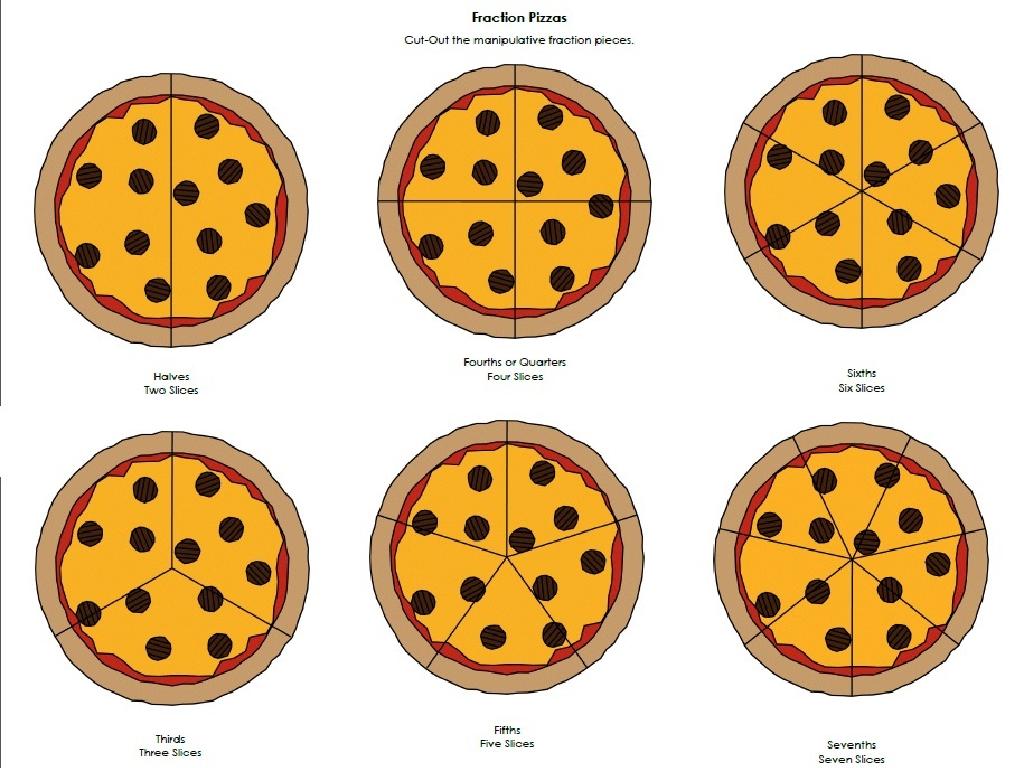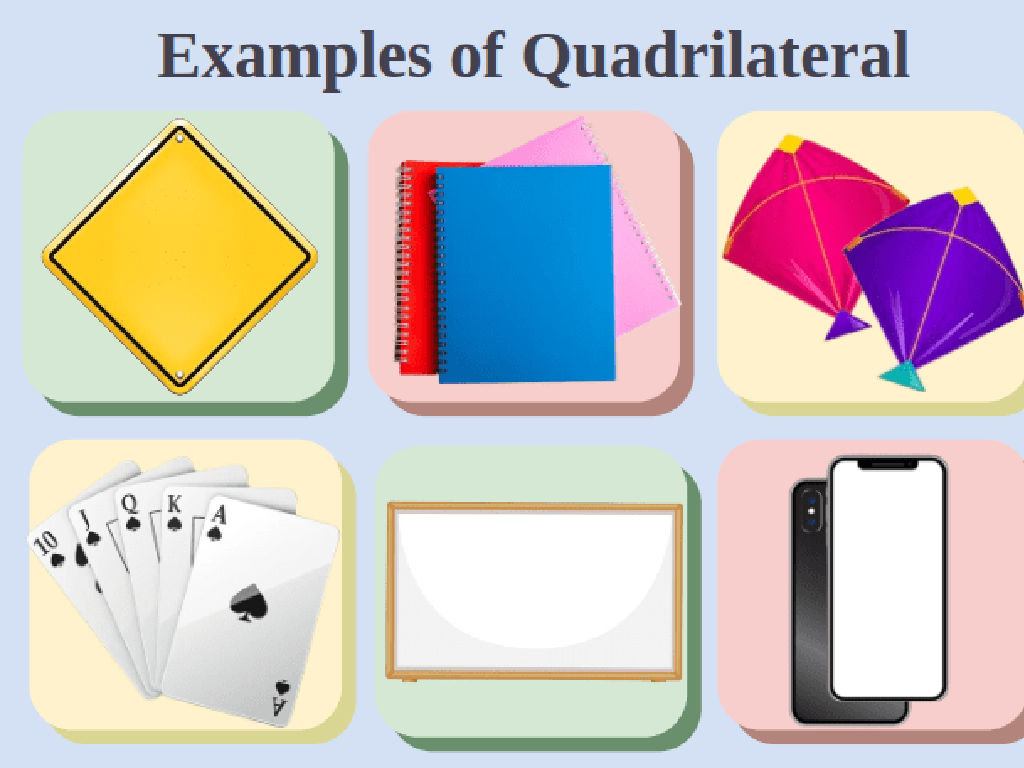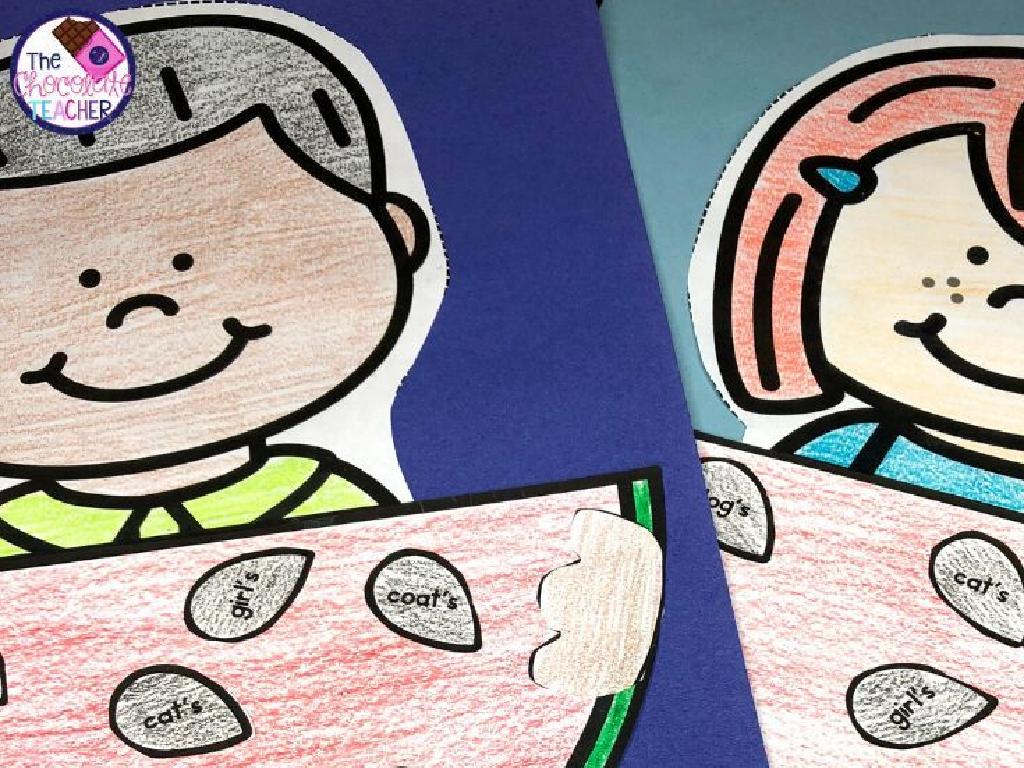Multi-Step Word Problems With Strip Diagrams
Subject: Math
Grade: Fourth grade
Topic: Multi-Step Word Problems
Please LOG IN to download the presentation. Access is available to registered users only.
View More Content
Visualizing Multi-Step Word Problems with Strip Diagrams
– Understand multi-step problems
– Problems that require more than one step to solve.
– Real-life importance of these problems
– Helps solve complex daily problems like budgeting or cooking.
– Today’s goal: Learn strip diagrams
– A tool to break down problems into simpler parts.
– Practice with examples
– We’ll use strip diagrams to solve sample problems together.
|
This slide introduces students to the concept of multi-step word problems and their relevance to everyday life. Emphasize that these problems are like puzzles that need more than one step to solve. Explain that solving these problems is a skill that helps in real-life situations such as planning a party or dividing up snacks. Today’s objective is to learn how to use strip diagrams, which are visual aids that help organize information and break down problems into manageable steps. Provide examples and encourage students to draw strip diagrams for each step of the problem. This will prepare them for the activities ahead, where they will apply this skill to solve different multi-step word problems.
Understanding Multi-Step Word Problems
– Define multi-step word problems
– Problems that require more than one math operation to solve.
– Everyday examples of multi-step problems
– Buying a toy and a snack with your allowance, figuring out total cost and change.
– Challenges of multiple steps
– It can be tricky to know which operation to use first.
– Strategies to solve multi-step problems
– Use strip diagrams to break down the steps visually.
|
This slide introduces students to the concept of multi-step word problems, which are common in everyday life and require the use of more than one mathematical operation to solve. Examples can include managing money or planning time. Emphasize the importance of understanding the problem fully before attempting to solve it. Discuss the challenge of determining the order of operations and introduce strip diagrams as a tool to organize information and visualize the steps needed to find a solution. Encourage students to practice with real-life scenarios to build their problem-solving skills.
Key Words in Multi-Step Problems
– Identify operation signal words
– Words that hint at math operations, like ‘sum’ for addition
– Understand ‘total’, ‘difference’
– ‘Total’ for addition, ‘difference’ for subtraction
– Grasp ‘product’, ‘quotient’
– ‘Product’ means multiplication, ‘quotient’ division
– Practice with sample problems
– Find and highlight key words in given word problems
|
This slide is aimed at helping students recognize key vocabulary that indicates specific mathematical operations in the context of multi-step word problems. Emphasize the importance of understanding words like ‘total’ (addition), ‘difference’ (subtraction), ‘product’ (multiplication), and ‘quotient’ (division). Provide practice problems for students to apply this knowledge by identifying and highlighting these key words, which will guide them in setting up strip diagrams correctly. Encourage students to explain their reasoning for choosing specific operations based on the context clues provided by these words. This will not only improve their problem-solving skills but also enhance their reading comprehension in mathematical contexts.
Introduction to Strip Diagrams
– What is a strip diagram?
– A visual tool to solve word problems
– Benefits of using strip diagrams
– They break down complex problems into manageable parts
– Example: Simple strip diagram
– E.g., Sam has 3 apples, gets 2 more. How many now?
|
This slide introduces strip diagrams, a valuable tool for solving multi-step word problems in math. Explain that a strip diagram is a visual representation that helps students organize information and understand the relationships between numbers in a word problem. Emphasize how strip diagrams can simplify complex problems by breaking them into smaller, more manageable parts. Provide a simple example, such as a problem involving adding apples, to show how a strip diagram is drawn and used. Encourage students to think of strip diagrams as a way to ‘see’ the problem before solving it. In the next class, we will practice creating and interpreting strip diagrams with a variety of word problems.
Drawing Strip Diagrams for Addition and Subtraction
– Use strip diagrams for operations
– Example: Addition strip diagram
– If Sam has 3 apples and gets 5 more, how many now?
– Example: Subtraction strip diagram
– If Lisa has 10 candies and gives 4 away, how many left?
– Solving multi-step problems
|
This slide introduces students to the concept of using strip diagrams as a visual tool to solve addition and subtraction problems. Start by explaining that strip diagrams are like bar models that can represent numbers and their relationships. For the addition example, show how to represent Sam’s initial 3 apples and the 5 he receives later in a diagram, and then combine them to find the total. For subtraction, illustrate Lisa’s 10 candies and how we take away 4 to find the remaining amount. Emphasize that these diagrams help to visualize the problem, making it easier to understand and solve multi-step word problems. Encourage students to draw their own strip diagrams for other problems and share their solutions.
Strip Diagrams: Multiplication & Division
– Example: Multiplication strip diagram
– Visualize groups of items being combined
– Example: Division strip diagram
– Shows how a total is split into equal parts
– Compare diagrams for operations
– Notice patterns between multiplication and division diagrams
– Practice with class activity
|
This slide introduces students to the concept of using strip diagrams as a visual tool to solve multiplication and division word problems. Start by explaining that a multiplication strip diagram represents groups of items being combined together. Show an example with simple numbers, such as 3 groups of 4 items. Then, move on to a division strip diagram, which illustrates how a total number is divided into equal parts, for example, 12 items split into 3 groups. Highlight the relationship between multiplication and division, showing how these operations are inverse of each other using strip diagrams. Conclude with a class activity where students draw their own strip diagrams for given multiplication and division problems to reinforce their understanding.
Solving Multi-Step Problems with Strip Diagrams
– Break down the problem into steps
– Understand the question and divide it into parts
– Create a strip diagram for each step
– Draw a bar to represent each part of the problem
– Solve the problem step by step
– Use the diagrams to find the solution, one step at a time
|
This slide introduces students to the concept of solving complex word problems by breaking them down into manageable steps. Start by reading the problem carefully and understanding what is being asked. Then, teach students to create strip diagrams, which are visual representations in the form of bars, to illustrate each part of the problem. This visual aid helps in organizing information and simplifies the process of solving the problem. Encourage students to tackle each step one at a time, using the diagrams to guide them to the solution. Provide examples of multi-step problems and work through them together, demonstrating how to draw and use strip diagrams effectively.
Let’s Practice Together: Multi-Step Problems
– Class activity: solve a word problem
– Draw strip diagrams together
– Use the board to visualize problem steps
– Discuss each problem-solving step
– Break down the problem into manageable parts
– Review and explain the solutions
– Ensure understanding of how we arrived at the answer
|
This slide is for a collaborative class activity focused on solving multi-step word problems using strip diagrams. Begin by presenting a multi-step word problem to the class. Invite students to come to the board to draw strip diagrams that represent the problem. This visual aid will help them understand the components of the problem and how they relate to each other. As a class, discuss the steps needed to solve the problem, ensuring that each student follows along and contributes to the conversation. After solving the problem, review the solution as a class, explaining why each step was necessary and how the strip diagram helped in finding the solution. For the teacher: Prepare 4-5 different word problems of varying difficulty to accommodate different student skill levels. Encourage students to ask questions and support each other in understanding the process.
Independent Practice: Strip Diagrams
– Work on multi-step problems
– Use strip diagrams for visualization
– Draw bars to represent parts of the problem
– Share diagrams with the class
– Explain your thinking behind the diagram
– Discuss solutions together
– Learn from peers’ methods and answers
|
This slide is for guiding students through independent practice with multi-step word problems using strip diagrams. Students should attempt to solve problems on their own, using strip diagrams as a tool to break down the information and visualize the steps needed to find a solution. After working independently, they will have the opportunity to share their diagrams and solutions with the class. This sharing session is crucial as it allows students to articulate their thought process, receive feedback, and learn different approaches from their peers. As a teacher, facilitate the discussion, ensure that each student gets a chance to share, and highlight effective strategies used by students. Encourage active listening and constructive feedback among classmates.
Class Activity: Crafting Word Problems
– Pair up and write multi-step problems
– Illustrate with strip diagrams
– Use bars to represent parts of the problem
– Swap problems with classmates
– Solve the exchanged problems
– Apply problem-solving skills to new challenges
|
This activity is designed to foster collaboration and creativity among students while reinforcing their understanding of multi-step word problems and strip diagrams. Students will pair up to create their own word problems that require multiple steps to solve, encouraging them to think critically about the structure of these problems. They will then draw strip diagrams to visually represent the problems they’ve created, which helps in breaking down complex information into manageable parts. After creating their problems, students will exchange them with another pair, providing an opportunity to see different problem-solving approaches. As a teacher, circulate the room to offer guidance and ensure that the problems are appropriate in difficulty. Prepare to discuss common challenges and successes after the activity.
Review and Reflect: Strip Diagrams and Multi-Step Problems
– Recap on multi-step problems
– We learned to solve problems with more than one step.
– Strip diagrams as a solving tool
– They visually represent and organize information.
– Discuss a challenge faced
Example: A challenging problem might have had many steps or confusing information.
– Share something enjoyable
Example: Enjoyable moments could be successfully solving a tough problem or understanding the diagrams.
|
This slide aims to consolidate the day’s learning by reflecting on the use of multi-step word problems and strip diagrams. Encourage students to think about the process of breaking down complex problems into manageable steps and how visual tools like strip diagrams can aid in understanding and solving these problems. Ask them to share their personal challenges to address any confusion and to highlight their successes to reinforce positive learning experiences. This reflection helps students internalize the strategies they’ve learned and recognize their progress, fostering a growth mindset.
Homework: Multi-Step Word Problems with Strip Diagrams
– Practice multi-step problems at home
– Use strip diagrams for organization
– Draw a strip diagram for each problem to help break it down
– Be ready to discuss solutions in class
– Show your problem-solving steps
– Explain how you solved the problems using the diagrams
|
This homework assignment is designed to reinforce students’ understanding of multi-step word problems and the use of strip diagrams as a visual aid. Encourage students to carefully read each problem, identify what is being asked, and use strip diagrams to organize information and find solutions. Remind them to show all their work and be prepared to explain their problem-solving process during the next class. Offer several examples of multi-step word problems for them to practice at home, ensuring a variety of problem types to challenge their understanding and application of the concept.






